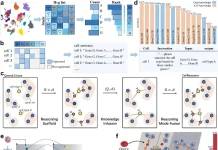For years, biocatalysis has depended on bioprospecting – in essence, sieving through Nature’s enzyme riches to find the best match. However, this method, though important, could be like searching for a needle in a haystack, which can take a long time and not be effective. Among today’s evolving field of biotechnology, one concept noticeably shines out like a beacon of hope and innovation: Predictive Biotechnology-armed with formidable computational tools and artificial intelligence (AI). At its core, predictive biotechnology relies on computational models as well as data analysis to be able to accurately predict biological phenomena. Think about looking into the future of biology, where we can anticipate protein structures, predict drug interactions, and unveil genetic disorder secrets.
In the pioneering article “The Development and Opportunities in Predictive Biotechnology,” Prof. Dr. Dirk Tischler and team go deep into this transformational area. Get ready for a journey into the world of predictive biotechnology, where biology, data science, and technology meet together, opening up endless opportunities.
Optimizing Biological Discovery
Predictive biotechnology makes use of AI algorithms to analyze huge amounts of biological information, including protein structures, genomes, and big data from biological research. This data can predict what enzymes do and what their properties are with remarkable precision.
The image in mind is more of scanning a hyper-tooled-up search engine version of a library; instead of flipping through the pages you put in your parameters, artificial intelligence serves you with a short list of possible candidates. This saves time and resources needed to look for suitable enzymes for specific activities.
A Toolbox of Advanced Technologies
The world of predictive biotechnology enjoys an incredible array of advanced technologies.
The most important among them are:
- Protein Structure Prediction:
AlphaFold and RoseTTAFold can predict the 3D structure of a protein from its amino acid sequence; this is especially important because the structure of an enzyme determines its function. BioCAD can be utilized to design novel protein structures, and ASI (artificial spiral intelligence) designs new molecules with improved properties.
- Enzyme Design and Engineering:
With the help of available knowledge about the structure, AI can help in designing enzymes with certain characteristics (e.g., enhanced activity or stability). CatalophoreTM & FireProt 2.0 are tools that allow researchers to design computationally stable and functional enzymes for specific purposes.
- Machine Learning for Pathway Design:
Sometimes, we have complex biotransformations, which require several enzyme steps. There are predictive tools that give us whole pathways as well as the ideal mixtures of enzymes leading to one desired result; ZYMSCAN & EnzymeMiner are some of them.
- In Silico Evolution Instigators:
What if you wanted to improve an enzyme? With machine learning tools like MILDE & Star, one can simulate protein in silico evolution, directing experimental protein engineering aimed at improving enzymes.
- Structure-Function Investigators:
DeepFRI & ESMFold are tools that predict the functional annotation of proteins based on their structural similarity with known proteins.
Possibilities: From Biofuels to Bioplastics
Predictive biotechnology has many applications across various sectors
The following are some exciting prospects:
- Greener Production of Biofuels: Predictive tools can be used to engineer enzymes that enhance biomass conversion into biofuels, such as ethanol and biodiesel. This would ensure transport is more sustainable in the future than ever before.
- Bioplastics Revolution: The world is searching for alternatives to conventional plastics. Therefore, predictive biotechnologies can enable the development of enzymes capable of breaking down plant material and synthesizing bio-based plastics, resulting in reduced dependence on fossil fuels.
- Revolutionizing Pharmaceuticals: Think about those enzymes that produce specific drugs or break harmful toxins. The pharmaceutical industry may revolutionize predictive biotechnology to bring about better-targeted therapies.
- Next-Gen Food Production: With the ever-increasing global population, sustainable food production is essential. Therefore, predictive tools can facilitate the design of enzyme catalysts for more efficient food processing, which includes the development of new ingredient sources for food products.
Challenges and the Road Ahead
Certainly, predictive biotechnology has challenges. It is crucial to improve the accuracy of artificial intelligence models, make them affordable for all users, and consider moral problems. However, each hurdle brings about transformations that result in progress and innovation.
One of the exciting things about predictive biotechnology is its ability to bring together science and society. In so doing, it makes healthcare available for everyone by making complex biological processes easy to understand and spreading scientific literacy. Biotechnology has endless possibilities with the onset of a new era. This invites us to embrace change through predictive biotechnology beyond our expectations, thus informing Dr. Tischler’s transformative works that inspire researchers, entrepreneurs, and innovators alike.
Join the Conversation: Are You Ready for the Predictive Biorevolution?
No doubt, biocatalysis would be a predictive future. This area will further develop and experience more revolutionary breakthroughs over time.
What is your opinion about predictive bio-technology? In what ways can it affect your life? Let’s start this conversation by sharing your thoughts in the comment section!
Let us all work together to unveil Nature’s mysteries and make a better world where people are in good health.
Article Source: Reference Paper
Follow Us!
Learn More:
Anchal is a consulting scientific writing intern at CBIRT with a passion for bioinformatics and its miracles. She is pursuing an MTech in Bioinformatics from Delhi Technological University, Delhi. Through engaging prose, she invites readers to explore the captivating world of bioinformatics, showcasing its groundbreaking contributions to understanding the mysteries of life. Besides science, she enjoys reading and painting.
















